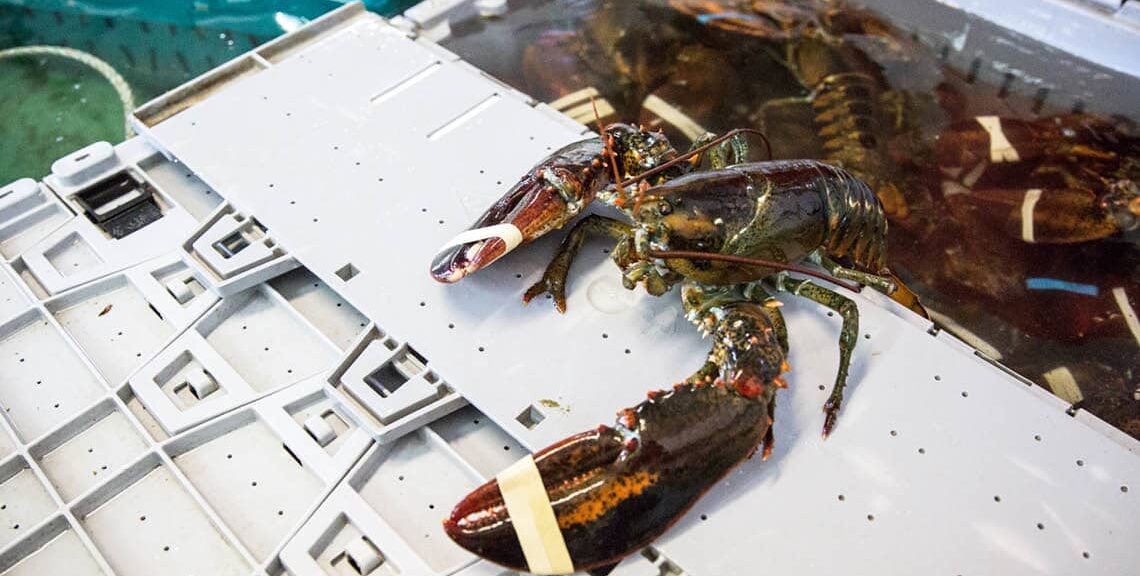Handling isn’t a just a matter of importance just on lobster boats. Once everything is unloaded at the docks and sent to dealer facilities, the way the lobsters are handled, stored and shipped has a major impact on the health and even the taste of the product.
Tom Adams of Maine Coast works mostly with live lobster, meaning that he puts a lot of time, effort and money into how the animals are handled.
“That’s because live lobsters aren’t a product you can keep in tanks forever.” Adams says. Maine Coast typically distributes the lobster inventory within 2-7 days to ensure they stay fresh for his customers.
That means continuous monitoring of the water in the tank. Twice a day, Maine Cost employees test for about 10 different parameters, including oxygen, temperature, salinity, ammonia, nitrites, and nitrates.
“We keep track of so many more factors than we did years ago,” Adams says.
That two to seven-day figure is a good rule of thumb, but it can also change depending on the time of year. Hard shell lobsters can last a little longer, but new shell lobsters aren’t as strong post-molting, as they’re using a lot of their strength to rebuild their shells.
Another reason water quality is so important is that, despite the tight timetable, lobsters can’t ship within 24 hours of being caught. They have to be what Adams calls, “seasoned.” What he really means is: they have to excrete stored waste from their last feeding, or they can quite literally poison themselves. The big offender here is ammonia, a waste product the lobsters produce that can damage their gills if it isn’t removed from the water. To deal with all that, you need a tremendous amount of filtration, Adams says.
Holding the lobsters isn’t the only consideration. Shipping and handling are critical as well — Adams typically ships between 100,000-200,000 pounds per week, depending on the time of year.
“Selection of packaging for where you’re shipping is very important,” Adams said.
Shipping techniques can vary greatly depending on customer preference and the method of transport. For example, lobsters shipped through domestic truck freight are packaged in a cardboard wax box. Since the animals are being shipped in refrigerated trucks, there’s no insulation in the packaging itself. But for oversee and some air shipping situations, the packaging does need insulation.
Packaging becomes even more crucial when it comes to New Shell lobsters, which have thinner shells.
“Some people think you can’t ship a New Shell lobster, but that’s what we’ve been doing in Maine forever,” Adams said. “They just have to be protected a little more … All it takes is one puncture and that lobster won’t survive shipping.”
Handling is another area where Adams is laser focused on reducing loss. For example, Maine Coast handled approximately 7 million pounds of lobsters in 2018. Their “shrink,” the percentage of the product lost during the handling phase, was under 1 percent. Just three years ago it was 1.5 percent, and Adams said the change is mainly due to more attention to the handling process.
Why so much attention to these issues? Because keeping lobsters healthy and happy is good for business. With the volume that dealers like Adams see, even a 1 percent mortality rate can translate into a six-figure loss.
“It’s about reducing mortality but also keeping the lobsters healthier so customers see success,” Adams adds.









